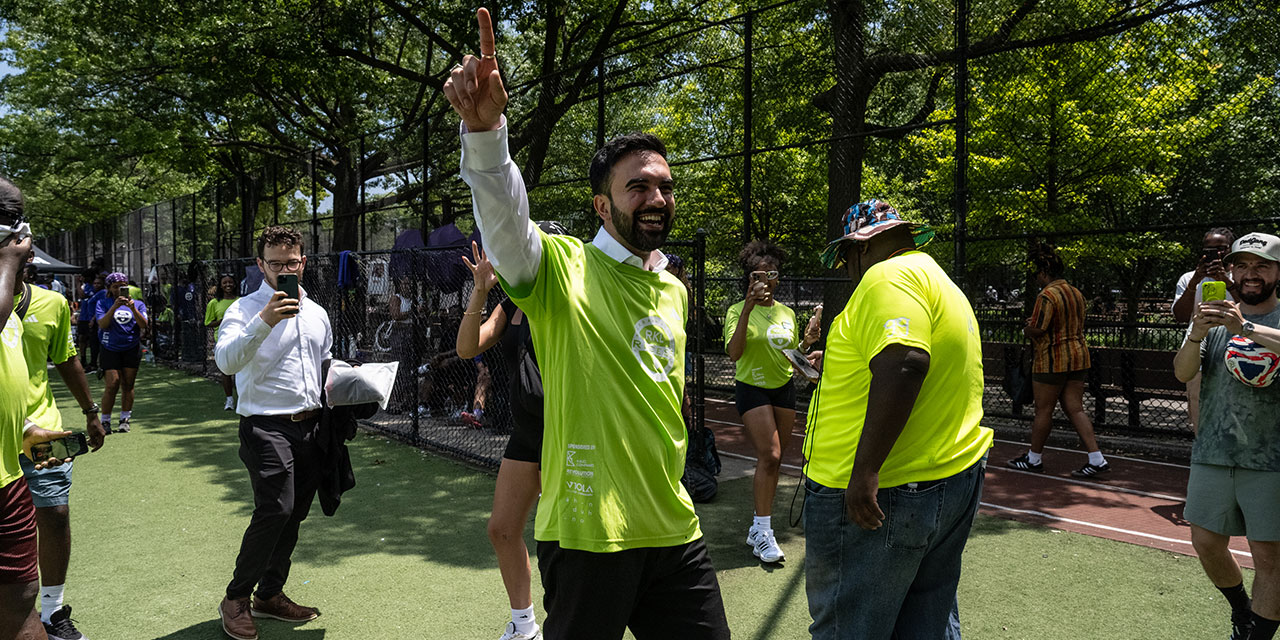
A year ago, Zohran Mamdani was a relatively unknown junior member of the State Assembly from Astoria serving his second term. Combining social-media savvy with an army of zealous doorknockers, the 33-year-old Mamdani has quickly transformed himself into a political force both loved and loathed. Initially dismissed as a marginal radical, he became a prolific fundraiser and has reached the maximum spending threshold permitted by the city’s campaign finance regulation.
The battle for the Democratic mayoral nomination is now effectively a two-man contest, with Mamdani looking to disrupt Andrew Cuomo’s once-inevitable coronation. Recent polls indicate a tightening race, with more than one survey showing Mamdani narrowly edging out the former governor (though Manhattan Institute polling shows Cuomo leading in a ranked-choice format).
Finally, a reason to check your email.
Sign up for our free newsletter today.
Mamdani’s campaign has been celebrated as a triumph of modern, digital-age politics, with his YouTube-style videos attracting significant celebrity attention. Yet, beneath the sleek digital surface lies a familiar strategy, echoing the perennial themes of New York politics. Mamdani’s path to victory lies in mobilizing college-educated white progressives and some ethnic voting blocs, particularly voters who share his South Asian background.
All the mayoral candidates stress that the city has become unaffordable. Mamdani, however, has campaigned on the cost of living virtually to the exclusion of every other issue, including criminal justice and quality-of-life matters.
In stressing the struggles of the working class, Mamdani has not demonstrated some novel political insight. Disparities of wealth and poverty have played a major part in the city’s political life at least since Jacob Riis chronicled horrific living conditions in the tenements at the end of the nineteenth century. As recently as 2013, a “Tale of Two Cities” theme framed Bill de Blasio’s successful campaign for mayor.
Mamdani has repackaged the venerable “how the other half lives” theme through the simplicity of his proposals. As mayor, he claims, he would eliminate certain costs and prevent others from increasing. He would use his powers to “freeze the rent” and open city-owned grocery stores to keep prices low. One pithy ad features “everyday New Yorkers” repeating with delighted surprise the tagline “freeze the rent!”
The Mamdani campaign implies that the mayor can issue these price controls by fiat, solving the “affordability crisis” with a wave of the hand. The message is uncomplicated by financial or legal considerations, and Mamdani’s campaign touches on few other issues. Evoking the cool sensibility now associated with creative-class transplants inhabiting the East River waterfronts of Queens and Brooklyn—a far cry from the docks, sugar refineries, and stapler factories that once characterized those neighborhoods and defined the city’s working-class economy—Mamdani has modernized and glamorized a familiar class-warfare message.
His campaign has leaned heavily on politics’ oldest tactic: direct voter contact through knocking on doors. Mamdani’s team touts its ground operation as “the largest volunteer mobilization in New York City history,” claiming that nearly 30,000 volunteers have rapped on some 750,000 doors as of early June. Any resident who cracks his door open hears about a rent freeze.
On the eve of the mayoral primary and after more than a week of early voting, the Mamdani campaign has enthusiasm on its side. Closed primaries are typically low-turnout affairs, making this devotion Mamdani’s greatest strength. Conversely, Cuomo’s relative lack of energized supporters is his greatest vulnerability.
A fixture in New York politics since his father Mario’s 1977 mayoral campaign, Cuomo is the default candidate. Well known because of his long and controversial political career, he is for many the only viable option in an unimpressive field. Unlike Mamdani, Cuomo is selling himself as a steady hand for troubled times, with a long list of endorsements from politicians and powerful unions.
As the race enters its final days, zeal to stop Mamdani and his socialistic agenda could help Cuomo close his enthusiasm gap. And Mamdani’s campaign success could ironically prove his undoing if it galvanizes moderate Democrats—particularly those alienated by his stance on Israel—to turn out in force and hand Andrew Cuomo his latest and greatest political resurrection.
Photo by Stephanie Keith 100584/Getty Images
City Journal is a publication of the Manhattan Institute for Policy Research (MI), a leading free-market think tank. Are you interested in supporting the magazine? As a 501(c)(3) nonprofit, donations in support of MI and City Journal are fully tax-deductible as provided by law (EIN #13-2912529).
Source link


















